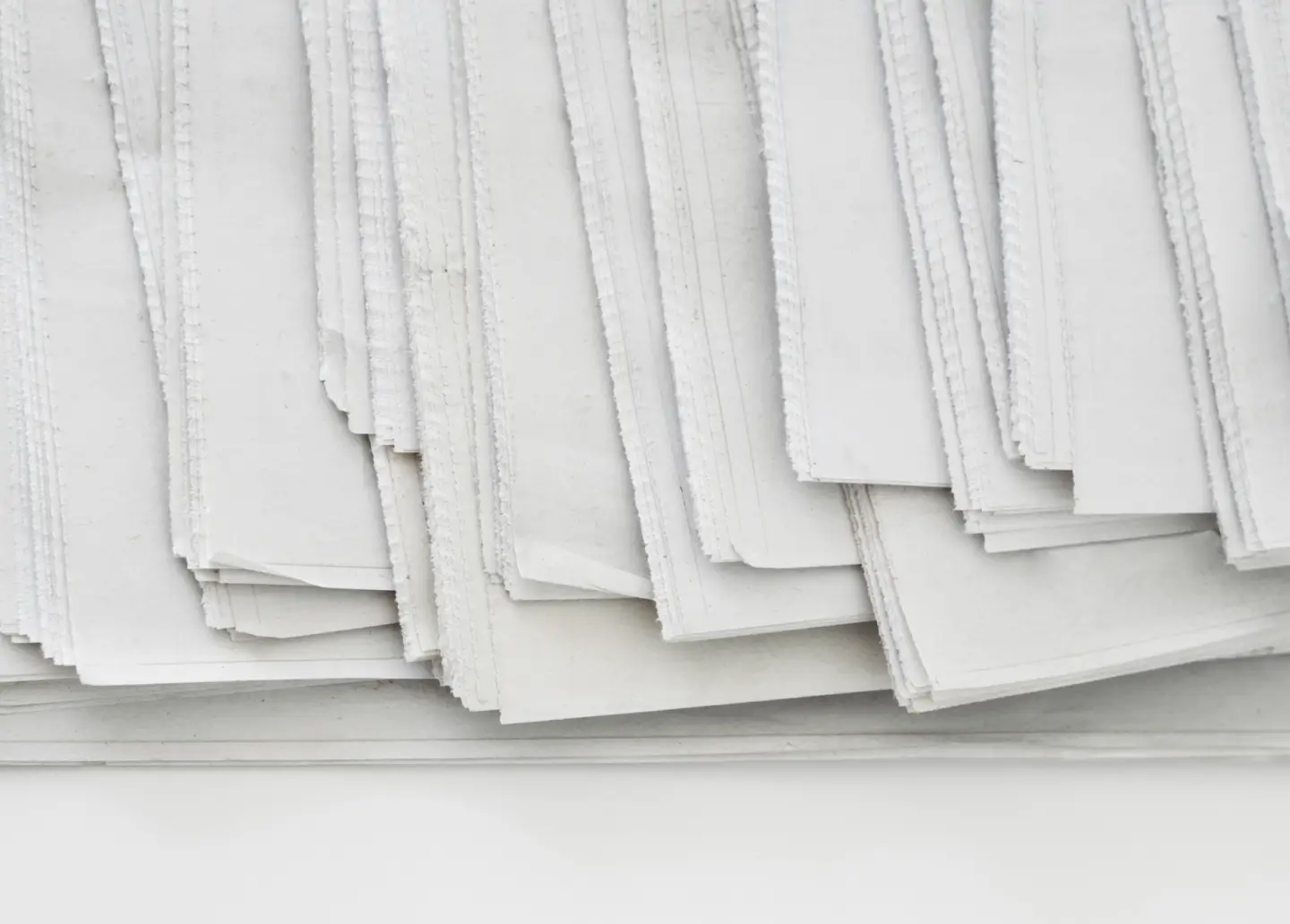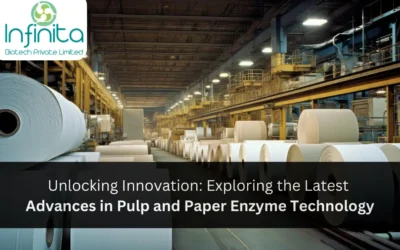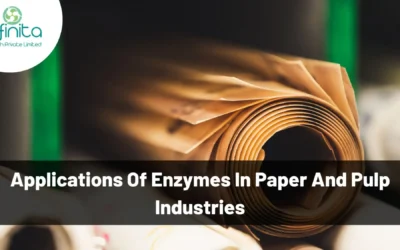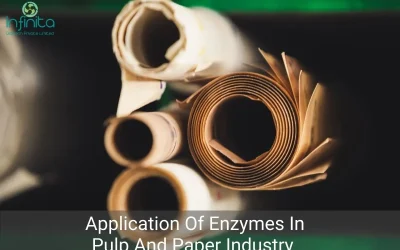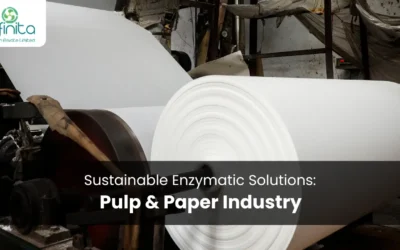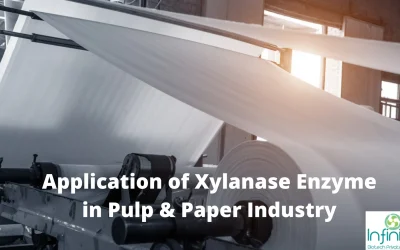What Is Cellulase Enzyme?
Cellulase is the name given to the group of enzymes created by fungi, microscopic organisms like bacteria, and protozoans that catalyse cellulolysis. The name is additionally utilised for any naturally occurring blend or complex of different such enzymes, that demonstrate sequentially or synergistically to decay cellulosic material. Cellulose breakdown is of impressive monetary significance since it makes a significant constituent of plants accessible for utilisation and use in chemical reactions. The particular reactions include the hydrolysis of the 1,4-beta-D-glycosidic linkages in cellulose, hemicellulose, lichenin, and grain beta-D-glucans. Since cellulose particles bind unequivocally to one another, cellulolysis is moderately tough contrasted with the breakdown of different polysaccharides, for example, starch. A few types of cellulases are known, which vary structurally and mechanistically. Catalysts that cut lignin have often been called cellulases, however, this old use is censured; they are lignin-modifying enzymes.
Types Of Cellulases:
The five general types of cellulases are based on the sort of reactions that they catalyse:
- Endocellulases (EC 3.2.1.4) arbitrarily sever interior bonds at amorphous sites that make new chain ends.
-
Exocellulases also known as cellobiohydrolases (EC 3.2.1.91) divide two to four units from the ends of the uncovered chains made by endocellulase which result in tetrasaccharides or disaccharides like cellobiose. Exocellulases are also ordered into type I. Type I work processively from the diminishing end of the cellulose chain, while type II work processively from the nonreducing end of the cellulose chain.
- Cellobiases (EC 3.2.1.21) or beta-glucosidases hydrolyse the exocellulase product into singular monosaccharides.
- Oxidative cellulases depolymerise cellulose by radical reactions, with respect to cellobiose dehydrogenase (acceptor).
- Cellulose phosphorylases depolymerise cellulose utilising phosphates rather than water.
Within the above types there are additionally progressive (otherwise called processive) and nonprogressive sorts. Progressive cellulase will keep on connecting with a solitary polysaccharide strand, nonprogressive cellulase will cooperate once then withdraw and engage in another polysaccharide strand. Cellulase activity is viewed as synergistic as each of the three classes of cellulase can yield substantially more sugar than the expansion of every one of the three independently. Beside ruminants, most creatures (counting people) do not produce cellulase in their bodies and can just partially break cellulose through fermentation, constraining their capacity to utilize energy in sinewy plant material.
Structure Of Cellulase:
Most fungal cellulases have a two-domain structure, with one reactant space and one cellulose binding area, that are associated by an adaptable linker. This structure is adjusted for chipping away at an insoluble substrate, and it permits the compound to diffuse two-dimensionally on a surface in a caterpillar-like design. There are likewise cellulases (for the most part endoglucanases) that need cellulose binding spaces. Both binding of substrates and catalysis relies upon the three-dimensional structure of the compound which emerges as a result of the degree of protein folding. The amino acid sequence and arrangement of their buildups that happen inside the active site, the position where the substrate binds, may impact factors like binding affinity of ligands, adjustment of substrates inside the active site and catalysis. The substrate structure is integral to the exact active site structure of an enzyme. Changes in the situation of buildups may bring about contortion of at least one of these communications. Extra factors like temperature, pH and metal ions impact the non-covalent connections between chemical structure.
Production Of Cellulase enzyme:
Fruitful use of cellulosic materials as inexhaustible carbon sources is reliant on the improvement of monetarily practical procedure innovations for cellulase creation. It has been determined that cellulase creation represents ~27 – 20% of the expense of ethanol creation from lignocellulosic materials. To minimise the costs, it is critical to utilise a substrate that is reasonable, e.g wheat straw, rice grain, green gram husk, etc. Enormous number of microorganisms are equipped for degrading cellulose, fungi, bacteria – which are the principle cellulase creating microorganisms.
Following are the steps associated with cellulase creation:
- Determination of powerful strain as cellulose source.
- Determination of waste as substrate, eg. Lignocellulosic farming waste.
- Enrichment of lignocellulosic waste in carbon content by the procedure of pretreatment.
- Fermentation development of chosen strain using the pre-treated lignocellulosic waste.
- Reaping the biomass developed after fermentation.
- Downstream handling of extracellular compounds and recuperation of cellulase.
From the above steps, it tends to be seen that, there are three fundamental stages for the creation of cellulase. They are the ‘pre – fermentative stage’, where the pre-treatment of the substrate and medium planning is done; trailed by ‘fermentative stage’ for the development of organism and lastly ‘post-fermentative stage’ including downstream preparing and product recuperation.
Uses Of Cellulase In Paper And Pulp Industry:
Enthusiasm for the use of cellulases in paper industry has expanded impressively in the last decade. The mechanical pulping process, i.e refining and crushing of the woody crude material lead to pulps with a high substance of fines, mass, and stiffness. Conversely, biomechanical pulping utilising cellulases brought about significant energy savings (20–40%) during refining and upgrades in hand sheet quality properties. Blends of cellulases (endoglucanases I and II) and hemicellulases have likewise been utilized for biomodification of fibre properties with the purpose of improving seepage and conquerability within the paper processes previously or after the beating of pulp. While endoglucanases can diminish the pulp thickness with a lower level of hydrolysis, cellulases have additionally been found to improve the bleachability of softwood kraft mash delivering a final brightness score practically identical to that of xylanase treatment.
Cellulases alone, or utilised in mix with xylanases, are advantageous for deinking of various kinds of paper wastes. Most applications proposed so far use cellulases and hemicellulases for the release of ink from the fibre surface by fractional hydrolysis of starch particles. It has been hypothesised that enhancements in dewatering and drinking of different pulps bring about the stripping of the individual fibrils and groups, which have a high proclivity for the encompassing water and ink particles. The fundamental points of interest of enzymatic deinking are decreased or eliminated alkali use, improved fibre brilliance, upgraded quality properties, higher pulp freeness and neatness, and diminished fine particles in the pulp. In addition, deinking using chemicals at acidic pH too forestalls the basic yellowing, disentangles the deinking procedure, changes the ink molecule size appropriation, and lessens natural contamination. Enzymatic deinking can bring down the requirement for deinking synthetic substances and diminish the adverse environmental effects of the paper business. Interestingly, the utilization of cellulases in improving the drainage has additionally been sought after by a few factories with the goal to raise the production rate. Enzyme treatments expel a portion of the fines or strip off fibrils on the fibre surface and dissolved and colloidal substances, which frequently cause serious waste issues in paper factories. In this perspective, cellulases have demonstrated impressive improvement in the general performance of paper plants.
Global sales of industrial enzymes were at a market estimation of USD 1.6 billion in 2014, of which cellulase and allied biocatalysts possess a critical share. Microbes are an alluring subject of interest for the creation of cellulases and hemicellulose because of their massive potential for cellulase creation, enzyme complexity and extreme environment changeability. Microbial cellulases are favoured for their tremendous modern relevance and generally lower cost of creation. Indeed, the enthusiasm for these cellulase catalysts is expanding every day worldwide for their utilisation in waste management, food processing, pharmaceuticals, pulp and paper, and ither industries.
